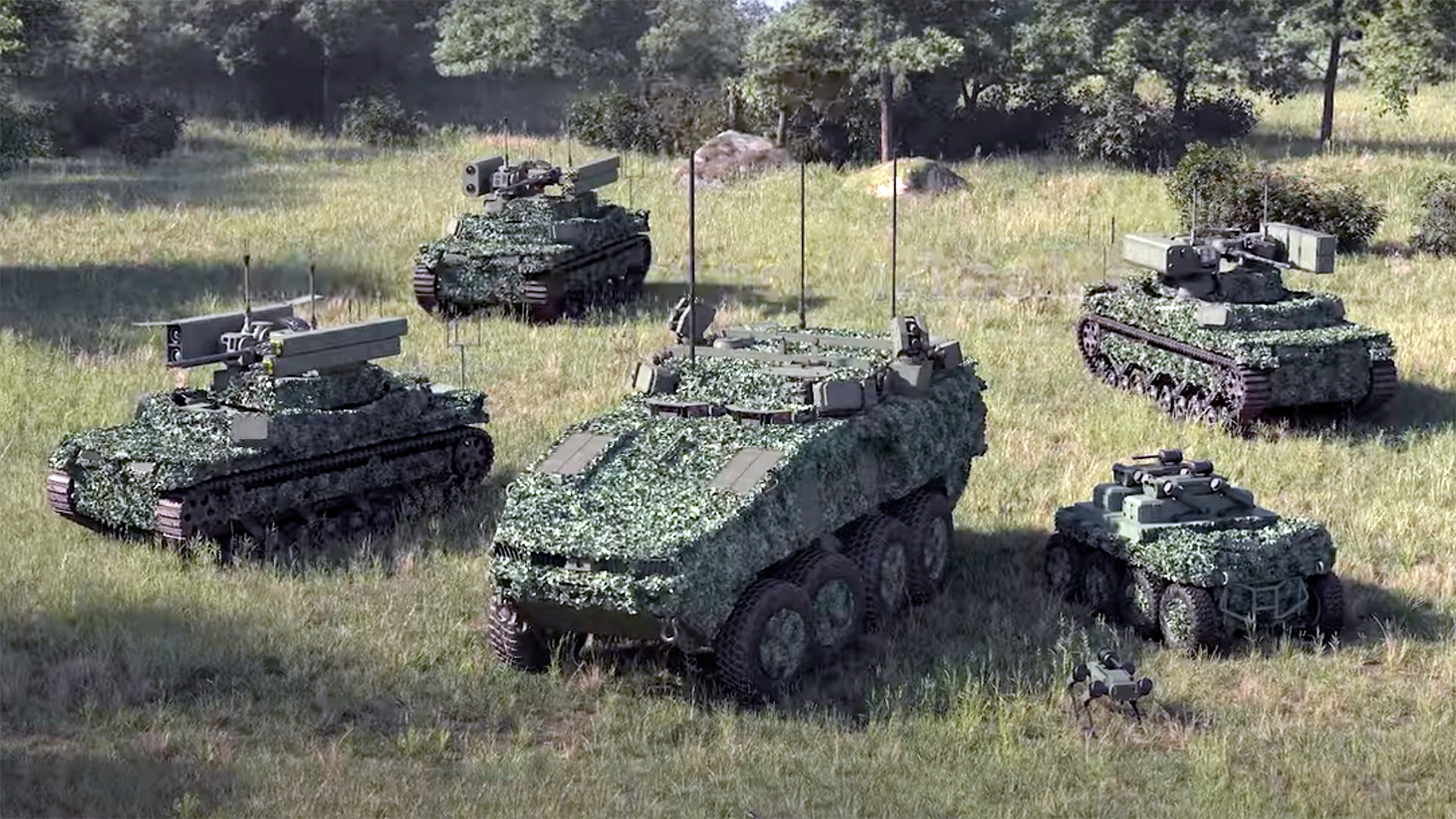General Dynamics Land Systems (GDLS) unveiled a new Mission Command On The Move (MCOTM) concept and its supporting hardware at the Association of the United States Army’s biggest annual conference (AUSA ’24), which wrapped up today outside of Washington, D.C. The idea is to take an advanced command center filled with communications and a crew that can interpret critical data and make fast decisions, pack it all into a nimble armored vehicle, and push it forward toward the edge of battle along with an array of uncrewed ground vehicles (UGVs) also under its control.
This concept appears to aim to accomplish a couple of key objectives. First, it makes a command and control node more nimble, protected, and thus far more survivable on a modern battlefield. Fixed command centers, which often have a major footprint and the multi-spectral signatures that go with it, are more vulnerable than ever, especially as precision-guided missile and drone technology proliferate at an alarming space. So allowing it to reposition rapidly, and even keep up with the forces it supports, is seen as an attractive capability. There is also a major logistics burden when it comes to establishing, breaking down, and repositioning traditional command centers in tents and trailers.

The other is to allow this mobile C2 node to also control an array of UGVs that can work in a defensive manner, protecting the command center and friendly forces, and even in an offensive one. Seeing as the C2 node is armored, deeply networked, and highly mobile, it could stay in relatively close proximity to at least some of the UGVs it controls, allowing for line-of-sight connectivity between them. The UGVs can provide direct fire, reconnaissance, air defense, and additional transport capabilities. This kind of manned-unmanned teaming armored ecosystem is very much the direction the Army is interested in heading in the coming years.
Central to this concept is the 8×8 Mission Command On The Move (MCOTM) armored vehicle, which is based on the StrykerX demonstrator. This rolling battlefield management node works as a forward brain for friendly forces and a quarterback for the aforementioned UGVs even in hotly contested areas.
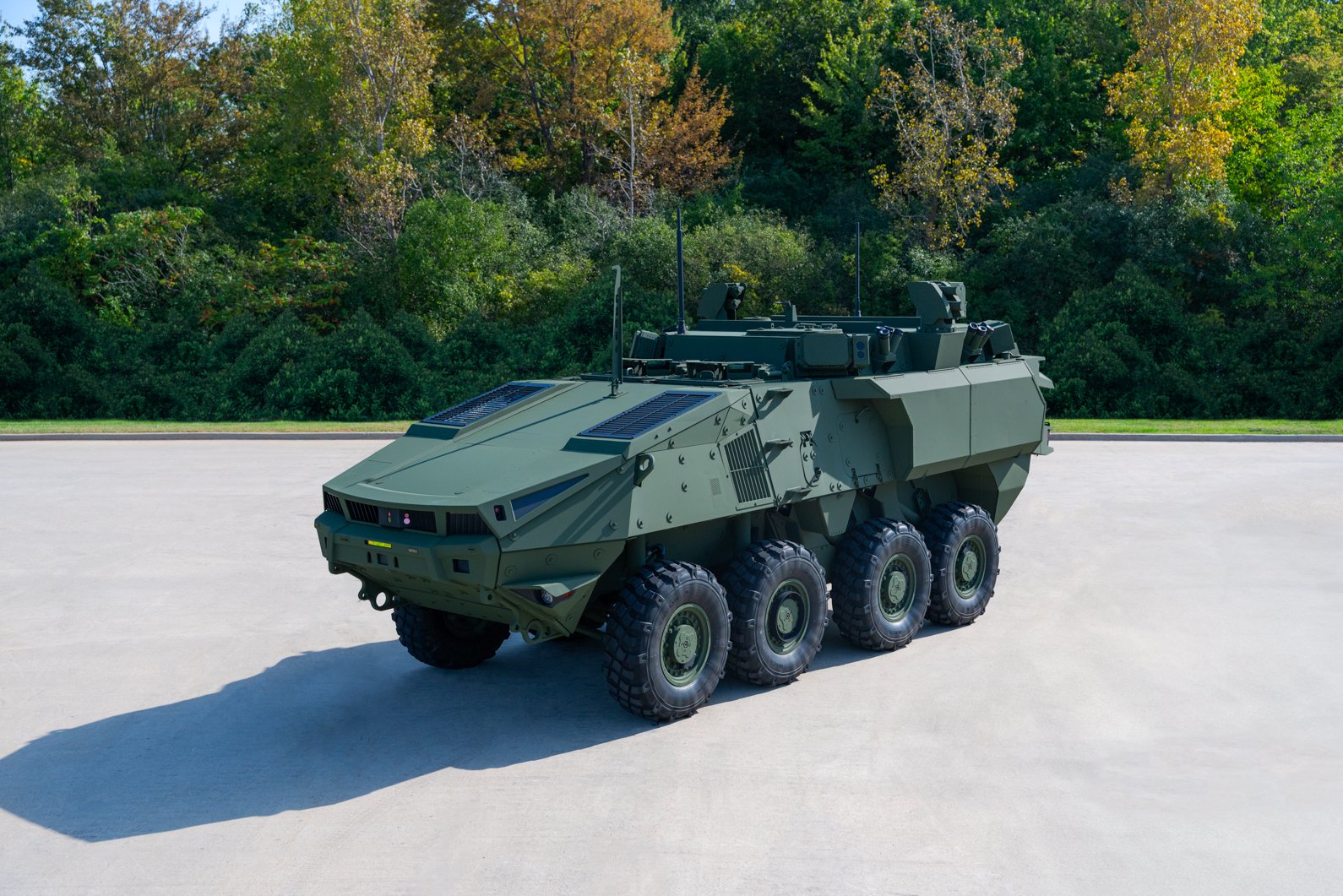
Like the StrykerX, which was unveiled at the AUSA show in 2022, the Stryker MCOTM system features hybrid-electric propulsion. This also builds on a previous StrykerQB concept that was rolled out for AUSA conference last year. Painted like a football uniform, it was displayed to show the Army “the ‘art of the possible’ when it comes to using existing platforms for manned-unmanned teaming, or human-machine integration,” Breaking Defense reported at the time.
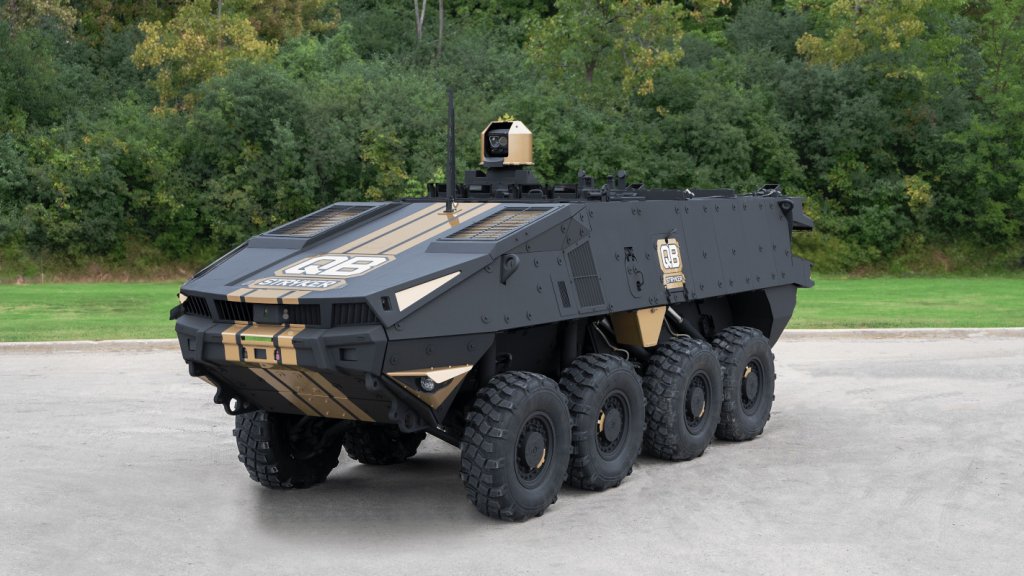
The new Stryker MCOTM is another step forward in that development. With increased interior space thanks to a raised rear roof, it has room for seven soldiers. The command vehicle uses GDLS’s KATALYST Next Generation Electronic Architecture (NGEA) to connect all its systems together and provide for ease of upgradability of its hardware and modification of its software. That enables the vehicle to adapt more quickly to changing tactical realities and technologies. The NGEA system offers “cyber defense, and individual communication devices for end-to-end secure communications, at echelon,” the company states. “Integrating innovative intra-command post communications helps substantively reduce electromagnetic signatures, enabling the MCOTM command post to ‘hide in plain sight.'” Extra attention has been put on reducing the vehicle’s signature beyond the radio frequency spectrum, including thermal and acoustic. The vehicle’s hybrid propulsion helps with both.
For self-protection, the Stryker MCOTM showcased on the showroom floor features the Iron Fist Light active protection system. The system is designed to shoot down approaching anti-tank guided missiles and other infantry anti-armor weapons, and could be used to also swat down incoming kamikaze drones and drone-launched projectiles in the near future.
GDLS has shown the Stryker MCOTM paired with the newest version of the company’s 8×8 Multi-Utility Tactical Transport (MUTT) robotic vehicle, known as the MUTT XM, and the latest iteration of its TRX Defender, a 10-ton modular tracked robotic vehicle that can be configured to provide ground and air defense fire support. At AUSA this year, GDLS also highlighted MUTT XM as a robot dog carrier vehicle, capable of releasing and retrieving these mechanical and potentially deadly quadrupeds in forward areas. They can also be used for outer security around the MCOTM.

At AUSA, the specific robot dog shown together with the MUTT XM was a Ghost Robotics Vision 60 quadrupedal UGV (Q-UGV), a design The War Zone has covered extensively in the past. This particular Vision 60 was carrying MIMIC spoofing technology from General Dynamics Mission Systems, “providing a deployed layer of protection for the MCOTM command vehicles,” according to the company.
The MUTT XM by itself “is bigger, faster, and stronger than its predecessors and is hardened against electromagnetic interference,” GDLS stated in a release. It “lightens the load as an equipment-carrying ‘robotic mule’ but also has built-in flexibility for a wide variety of combat, combat support, and combat service support functions and payloads.”

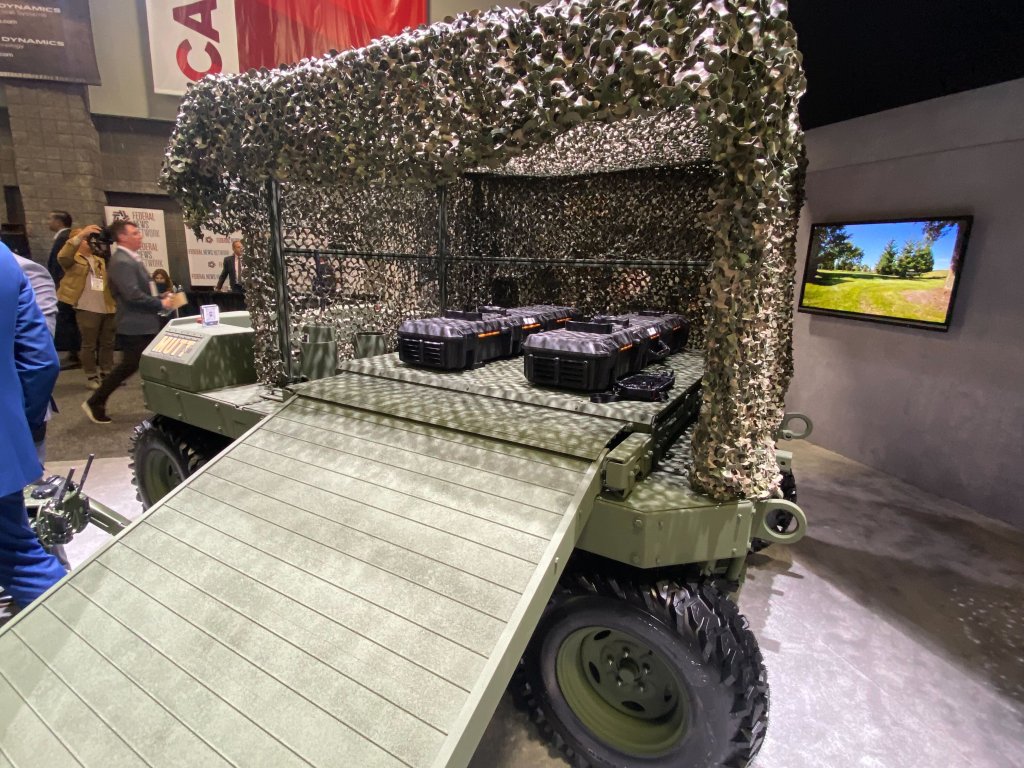
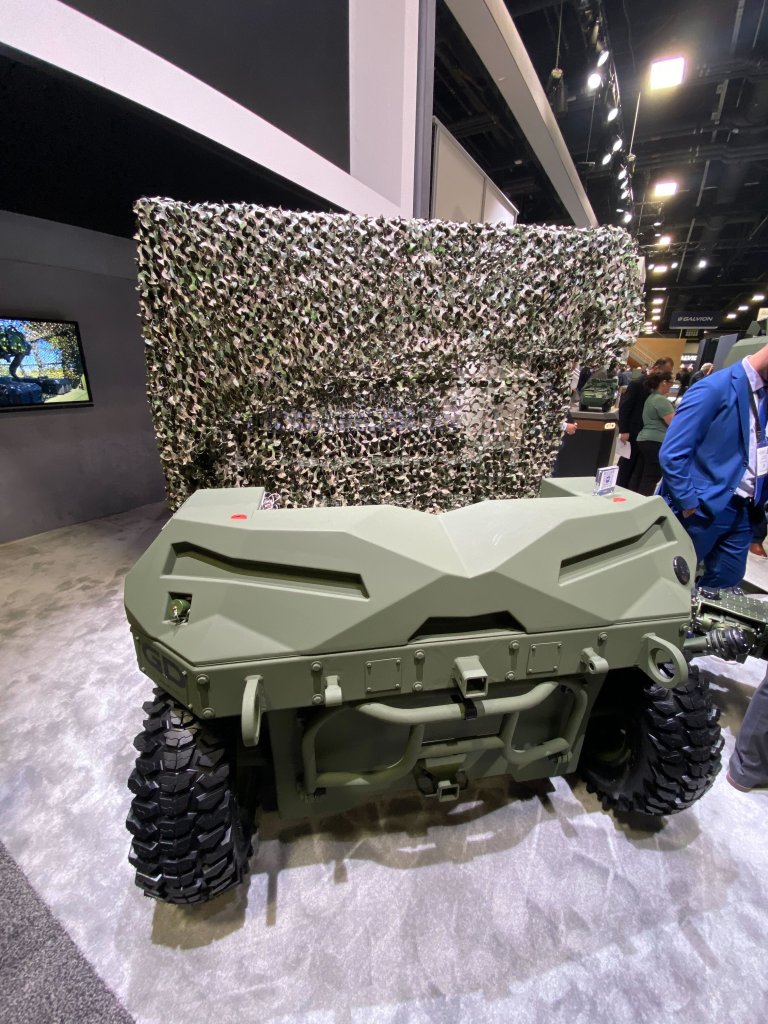
The Army has been experimenting with versions of the MUTT vehicle for a while, something we noted in February 2022. In an opposition forces exercise, the 8×8 wheeled, hybrid-electric-powered uncrewed ground vehicles (UGV) were each configured with a Common Remotely Operated Weapon Station (CROWS) equipped with a 7.62mm M240 machine gun and a Javelin anti-tank guided missile (ATGM) launcher. It also had a tethered quadcopter drone with an array of video cameras allowing it to provide additional surveillance and reconnaissance capacity, as well as act as a signal relay. That extends how far the MUTT can operate from its human operators. You can see one example of that configuration in the image below.
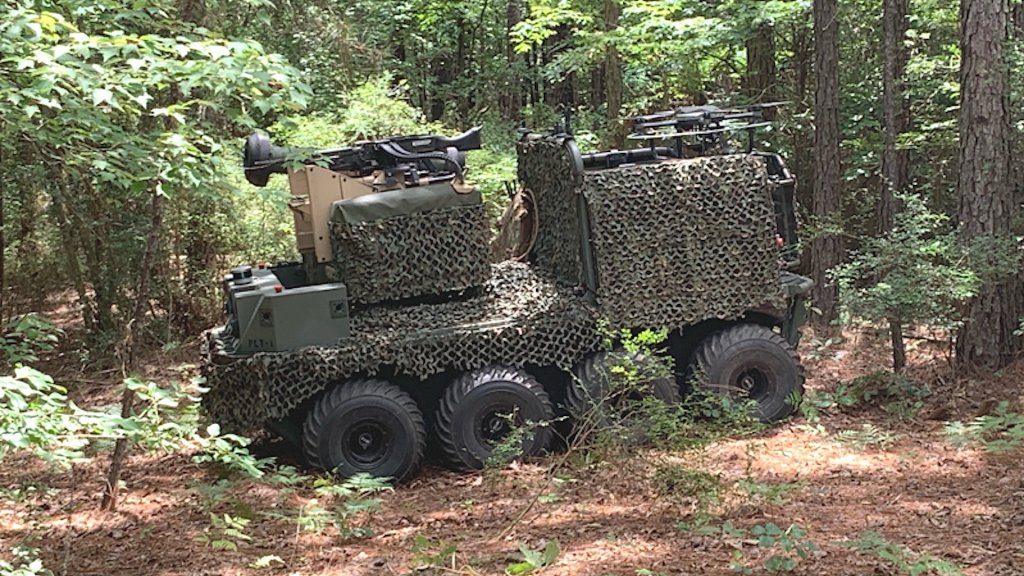
TRX, which GDLS had first unveiled at the AUSA gathering in 2020, is a tracked semi-autonomous vehicle with a flat deck that can be configured in numerous ways, including for direct and indirect fire, autonomous resupply, complex obstacle breaching, counter-unmanned aerial systems (C-UAS), electronic warfare (EW), reconnaissance, and other battlefield missions. The core design was developed to meet the Army’s need for a 10- to 20-ton UGV. That vehicle was the company’s submission to the Army’s Robotic Combat Vehicle-Medium (RCV-M) competition that Howe & Howe ultimately won with its M5.
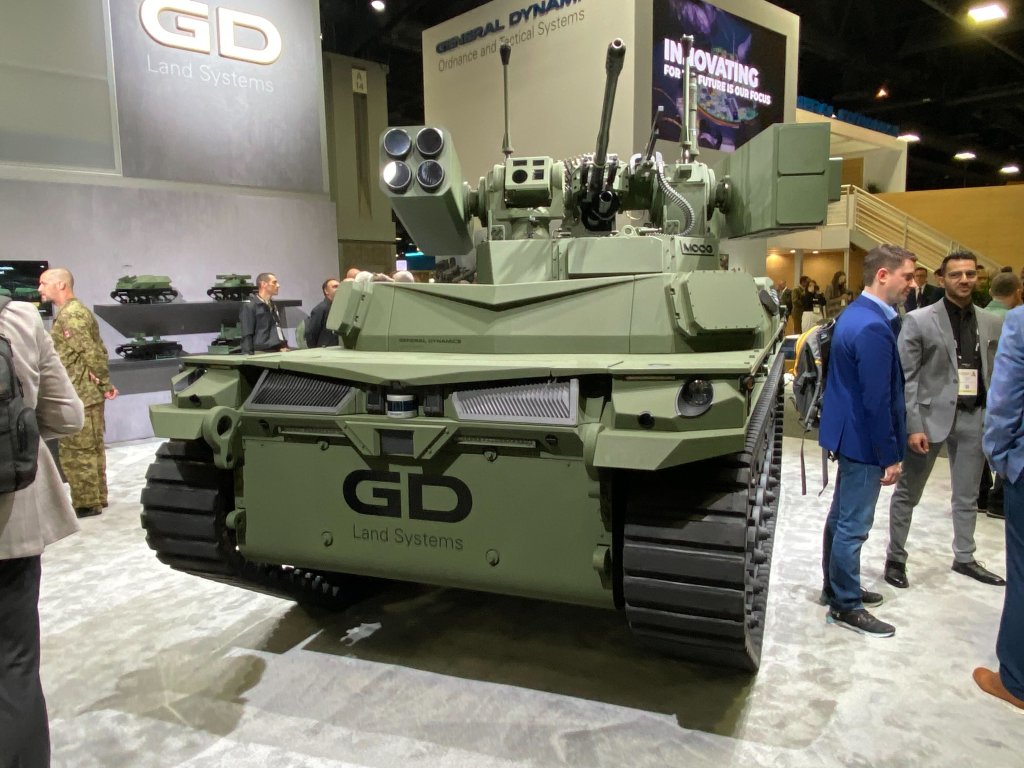

As seen above and below, the TRX on display at AUSA this year was mocked up as a short-range air defense (SHORAD) system with faux Stinger short-range heat-seeking surface-to-air missiles, Coyote anti-drone interceptors, a 30mm automatic cannon, and a 7.62x51mm machine gun. This is an impressive and diverse loadout for a relatively small tracked vehicle. Vehicles that are capable of rebuffing drone attacks, are armored, and can keep up with frontline forces are becoming a growing priority for the U.S. Army and this is clearly a major business growth area for industry. Having just such a vehicle to protect the manned command and control Stryker that could operate detached from forward forces is also key.
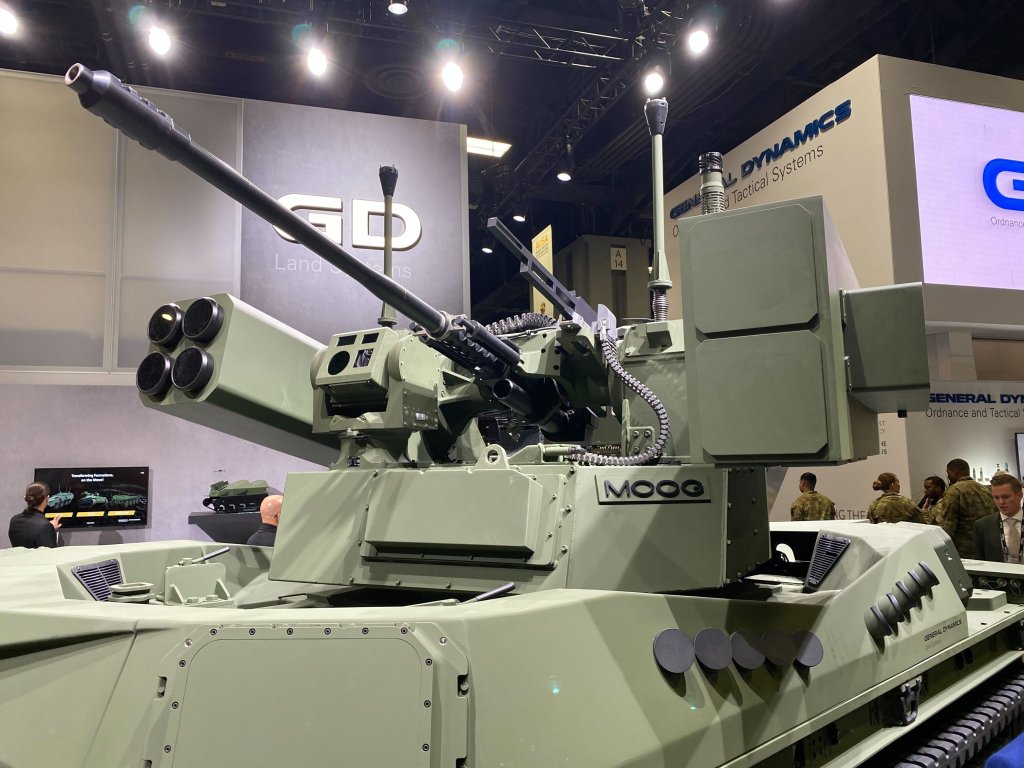
Another version of TRX we wrote about in 2021 was set up as a launch platform for 50 AeroVironment Switchblade-series loitering munitions. Such a configuration could venture forward and launch a devastating drone swarm at the command of the MCOTM.
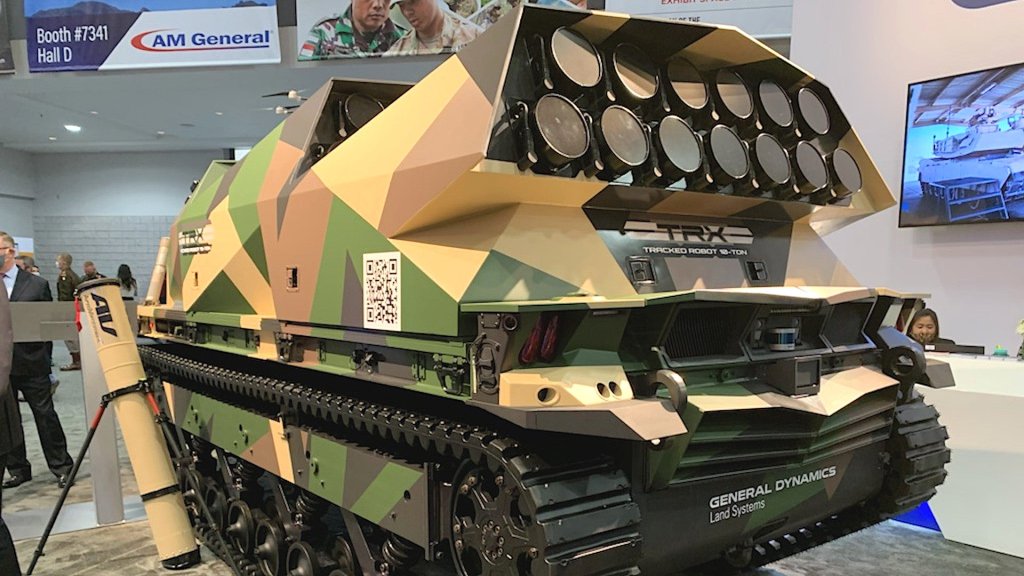
The Army is increasingly looking to integrate UGVs with its crewed armored formation on the battlefield. Similar to how the USAF wants its Next Generation Air Dominance manned ‘fighter’ to be the centerpiece of a family of systems that will be dominated by uncrewed types, working as the central C2 node ‘quarterback’ for these drones, GDLS is presenting a similar concept for ground operations. Moving the controller forward not only helps with connectivity and awareness, but also allows for deficiencies in autonomy to be overcome by proximity. Advances in autonomy will change those relationships over time, but this kind of on-the-move management will be important at least in the near term as the U.S. military has stressed that having humans at least somewhere ‘on-the-loop’ is a requisite for uncrewed platforms.
As far as the MCOTM’s more traditional command and control functions, those are not clear, but even possessing some of these abilities and being able to keep them on the move and forward while flanked by a protective phalanx of UGVs is an enticing concept to ponder.
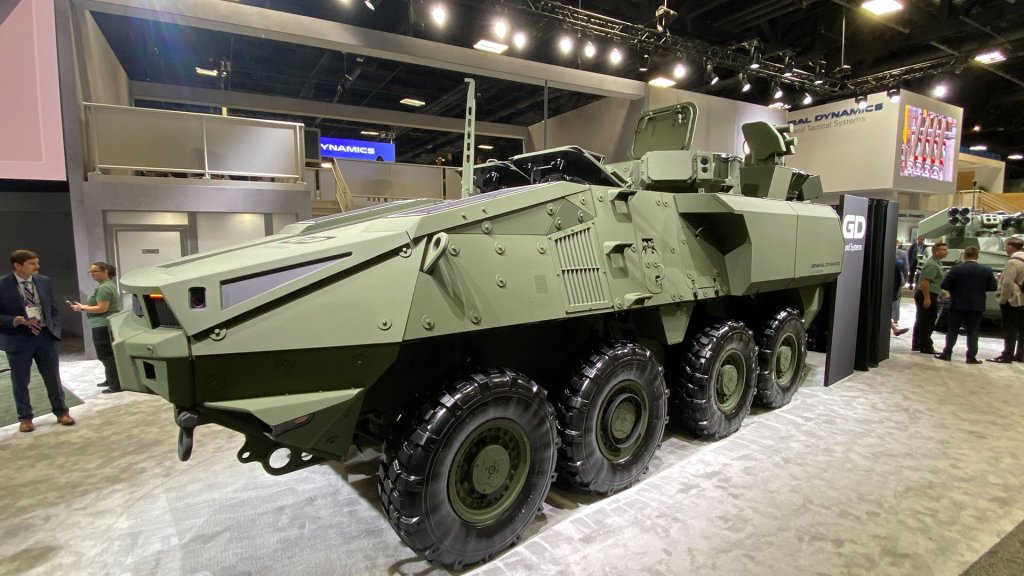
Regardless of whether this system fills this role for the Army or anyone else, the general concept behind it is something we’re going to be seeing more of in the coming years.
Contact the author: howard@thewarzone.com
